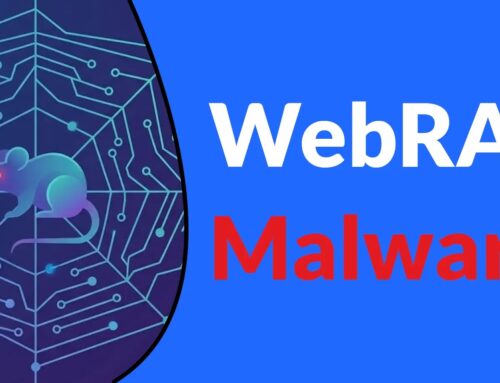
FinWise Insider Breach Exposes 700K Customer Records to Former Employee
FinWise Insider Breach: A Cautionary Tale of Data Exfiltration
The digital landscape is fraught with perils, and while external threats often dominate headlines, the danger lurking within an organization can be equally, if not more, damaging. The recent FinWise insider breach, involving American First Finance, LLC, serves as a stark reminder of this critical vulnerability. A terminated employee, leveraging unauthorized access, managed to exfiltrate nearly 700,000 customer records, exposing sensitive personal identifiers and highlighting significant gaps in access control and monitoring.
The Anatomy of the FinWise Insider Breach
The incident, first reported by Cyber Security News, details how a recently terminated employee of American First Finance, a Dallas-based financial services firm, exploited existing access to its production database. This individual, despite being separated from the company, was able to execute direct SQL queries, bypassing security measures and extracting a massive amount of confidential customer data. The compromised dataset included an estimated 689,000 names, Social Security numbers, and various other personal identifiers. This incident underscores the profound impact an insider threat, particularly from a disgruntled or opportunistic former employee, can have on an organization’s security posture and customer trust.
The Grave Impact of Compromised PII
The exfiltration of nearly 700,000 customer records containing personally identifiable information (PII) like names and Social Security numbers has severe repercussions. For affected individuals, this exposure significantly increases their risk of identity theft, financial fraud, and other malicious activities. For American First Finance, the breach could lead to substantial regulatory fines, reputational damage, and a considerable loss of customer confidence. The cost of such breaches extends far beyond immediate remediation, impacting long-term business viability and compliance obligations. This specific incident does not have an associated CVE number as it is not a software vulnerability, but rather a breach stemming from access control failures.
Remediation Actions and Proactive Defense Strategies
Preventing and mitigating insider threats like the FinWise breach requires a multi-layered approach focusing on robust access controls, continuous monitoring, and proactive incident response planning. Organizations must prioritize these areas to safeguard sensitive data.
- Principle of Least Privilege: Grant employees only the minimum access necessary to perform their job functions. Regularly review and adjust access privileges based on role changes and termination status.
- Immediate Access Revocation: Implement a stringent offboarding process to immediately revoke all system and data access for terminated employees. This includes email accounts, network access, application access, and database credentials.
- Database Activity Monitoring (DAM): Deploy robust DAM solutions to continuously monitor and audit all activities within production databases. This helps detect anomalous behavior, such as unauthorized SQL queries or large data exports, in real-time.
- User Behavior Analytics (UBA): Utilize UBA tools to establish baseline user activity and identify deviations that could indicate malicious intent. This can help flag unusual access patterns or data exfiltration attempts.
- Strong Authentication and Multi-Factor Authentication (MFA): Enforce strong password policies and implement MFA for all sensitive systems and databases, even for internal users.
- Data Encryption: Encrypt sensitive data both at rest and in transit. Even if data is exfiltrated, encryption can render it unusable to unauthorized parties.
- Regular Security Audits and Penetration Testing: Conduct regular audits of access controls, security configurations, and perform penetration tests to identify potential vulnerabilities an insider could exploit.
- Employee Training and Awareness: Educate employees about the importance of data security, common insider threats, and reporting suspicious activities.
- Incident Response Plan: Develop and regularly test a comprehensive incident response plan specifically addressing insider threats. This plan should detail steps for detection, containment, eradication, recovery, and post-incident analysis.
Tools for Detection and Mitigation
A range of cybersecurity tools can assist in detecting and mitigating insider threats and unauthorized data access.
| Tool Name | Purpose | Link |
|---|---|---|
| Imperva Database Security | Database Activity Monitoring, Vulnerability Assessment | https://www.imperva.com/products/database-security/ |
| Varonis Data Security Platform | Data governance, user behavior analytics, threat detection | https://www.varonis.com/ |
| Splunk Enterprise Security | SIEM, UBA, threat detection and incident response | https://www.splunk.com/en_us/software/splunk-enterprise-security.html |
| SailPoint IdentityIQ | Identity governance, access management | https://www.sailpoint.com/products/identityiq/ |
| CyberArk Privileged Access Manager | Securing privileged accounts and access | https://www.cyberark.com/products/privileged-access-manager/ |
Key Takeaways from the FinWise Incident
The FinWise insider breach serves as a critical case study for any organization handling sensitive customer data. It underscores that trust, once established, must be continuously earned and protected through robust technical controls and strict operational procedures. The incident highlights the paramount importance of immediate access revocation upon employee termination, continuous monitoring of database activities, and the implementation of strong access control policies. Organizations must remain vigilant against threats from all vectors, including those originating from within their own ranks, to truly safeguard their data and reputation





